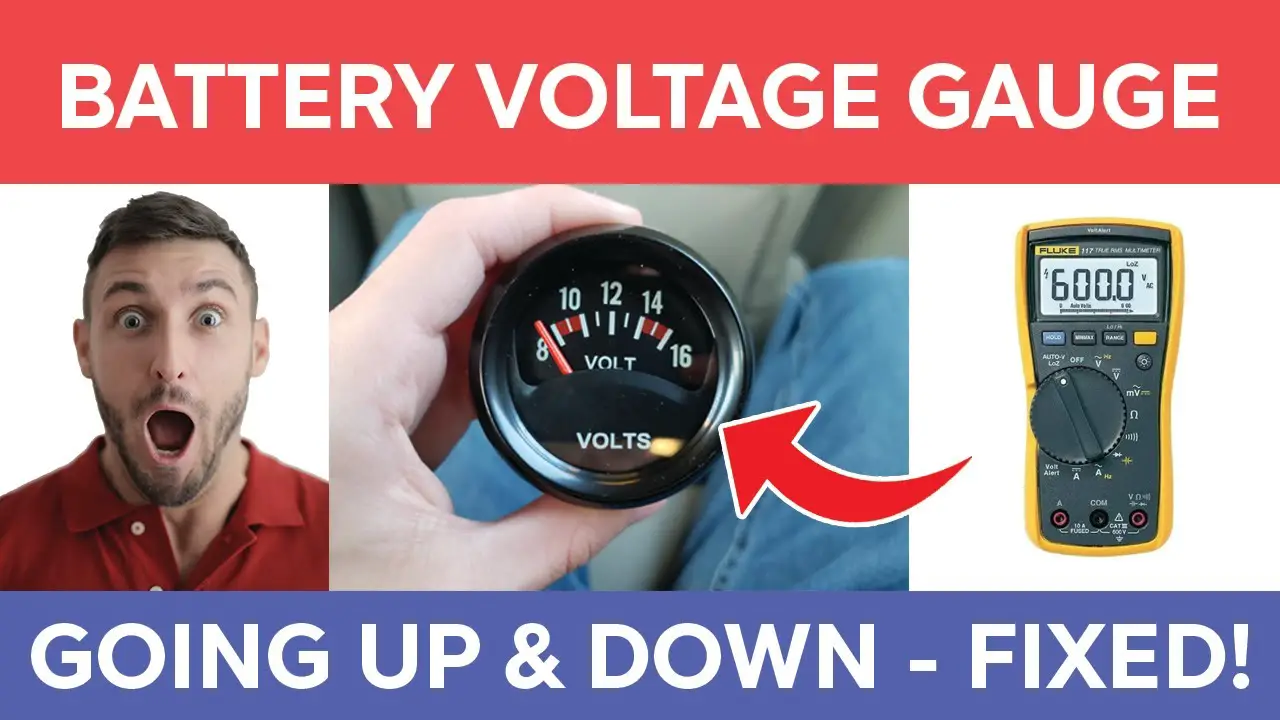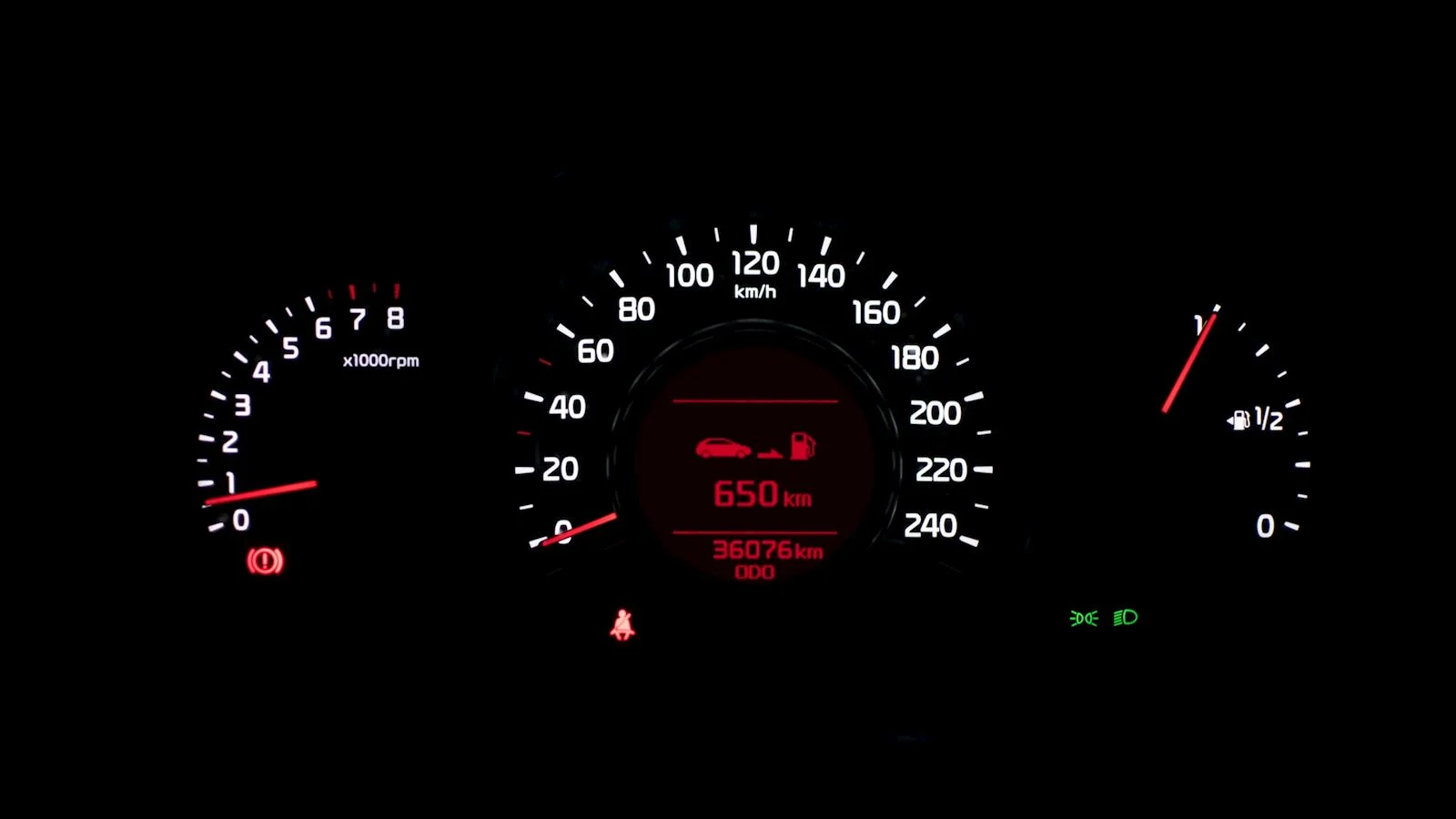If you’re a car owner, you might have experienced the frustration of a battery voltage that keeps fluctuating.
It’s a common issue that can be caused by several factors, including a poor alternator, an old battery, loose connections, battery corrosion, and high electricity demand.
In this article, we will explore the reasons behind this phenomenon and what can be done to correct the issue.
We’ll also provide some tips on how to maintain your car battery to prevent future problems.
So, buckle up and join us on this journey to understand why your car’s battery voltage keeps going up and down.
What Are the Main Reasons Why Car Battery Voltage Keeps Going Up And Down?
Car battery voltage fluctuations can be a frustrating issue for car owners. The battery voltage should remain constant, but when it keeps going up and down, it can be a cause for concern. Here are seven common reasons why your car battery voltage keeps fluctuating:
1: Poor Alternator
A common issue leading to erratic battery voltage is a defective alternator. Responsible for energizing your vehicle’s electronic systems and charging the battery, the alternator plays a crucial role.
When the alternator is overcharged or malfunctions, it triggers fluctuations in battery voltage while you’re on the road or battery voltage fluctuation at idle. This instability can stem from issues within the alternator, disrupting its ability to effectively power the vehicle’s electronics and keep the battery charged.
Understanding the connection between a problematic alternator and variations in battery voltage is essential for diagnosing and addressing these electrical issues in your vehicle.
2: Old Battery
The occurrence of voltage fluctuations can be attributed to a worn-out or damaged battery. The vehicle’s dashboard features a battery gauge that reflects the current charge status, indicating variations when the battery is compromised.
The age and condition of the battery play a pivotal role in these fluctuations. As batteries age, their ability to maintain a consistent charge diminishes, leading to observable changes in voltage levels.
An automotive battery of higher quality typically sustains reliable power and efficiency for approximately 4 to 6 years. Recognizing the impact of an aged or deteriorating battery on voltage fluctuations is essential for diagnosing electrical irregularities in your vehicle.
3: Abandoned Car
When a car remains unused for an extended period, the battery is prone to losing its charge, leading to battery voltage keeps going up and down while parked. This scenario is particularly common when a vehicle is left abandoned without regular operation.
The lack of activity and usage deprives the battery of the necessary charging cycles, causing it to gradually discharge over time. As a result, the voltage in the battery becomes inconsistent.
Knowing the connection between prolonged inactivity and battery voltage fluctuations is crucial for diagnosing potential issues arising from leaving a car unused for extended periods. Regular usage and proper maintenance are essential to prevent the adverse effects of extended vehicle abandonment on battery performance.
4: Loose Connections
Battery voltage fluctuating when car is off or on can result from loose connections in the battery. It is essential to inspect the battery terminals and cables for indications of corrosion or looseness. When the connections are not securely fastened, they can disrupt the flow of electricity, leading to erratic voltage levels in the battery.
The battery terminals, which connect the battery to the vehicle’s electrical system, should be free from corrosion that could impede the electrical connection. Additionally, ensuring that the cables are tightly secured to the terminals is crucial for maintaining a stable electrical flow.
Identifying and addressing any looseness or corrosion in the battery connections is vital for preventing disruptions in the electrical system and addressing potential issues associated with voltage fluctuations in the battery.
5: Battery Corrosion
Voltage fluctuations may occur due to corrosion on the battery terminals. Regularly cleaning the battery terminals and cables is crucial to preventing corrosion. Corrosion, a build-up of residue on the battery terminals, hinders the efficient flow of electricity.
When the terminals are corroded, it disrupts the connection between the battery and the vehicle’s electrical system, leading to fluctuations in voltage. Maintenance, in the form of routine cleaning, is essential to ensure that the terminals remain free from any corrosive build-up.
This simple preventive measure helps maintain a reliable and stable electrical connection between the battery and the vehicle, minimizing the risk of voltage irregularities. Keeping the battery terminals and cables clean is an effective way to address potential issues associated with corrosion and maintain optimal electrical performance in your vehicle.
6: High Electricity Demand
Excessive electrical demand from power-intensive components like headlights, audio systems, and air conditioning can lead to car battery voltage fluctuation while running. The battery serves as the energy source for these power-hungry accessories.
When these components draw more power than the battery can readily provide, it results in a decrease in battery voltage. This drop in voltage occurs due to the strain imposed by the heightened electricity demand, affecting the overall performance of the battery. Identifying the connection between high electricity demand and voltage drops is crucial for recognizing potential issues arising from the strain on the battery.
Knowing the impact of power-hungry accessories on battery voltage helps in assessing and addressing challenges related to maintaining optimal electrical levels in the vehicle.
7:Temperature Changes
Temperature fluctuations can induce variations in voltage, impacting overall stability. Voltage stability is influenced by diverse factors, including battery age, extreme temperatures, electrical loads, charging system anomalies, parasitic battery drain, and irregular maintenance.
These variables collectively contribute to the dynamic nature of voltage levels. Batteries, in particular, are sensitive to temperature changes, and their performance can be affected by exposure to extreme conditions. The aging process of a battery also plays a pivotal role in its response to temperature shifts.
Additionally, the overall health of the charging system and the presence of parasitic battery drain further contribute to the complexity of maintaining consistent voltage levels. Regular maintenance practices are essential in mitigating the impact of these factors on voltage stability, ensuring the reliable operation of electrical systems.
How To Fix Car’s Battery Voltage That Keeps Going Up And Down?

If you’re facing the above problems in your car, here are some tailored solutions to prevent your battery voltage from going up and down:
-
Temperature Management
Shielding the battery from extreme temperatures can mitigate their impact on voltage fluctuations. Consider using thermal insulation or relocating the battery to a more temperature-stable area within the vehicle.
-
Battery Replacement
If your battery is reaching the end of its lifespan, replacing it with a new, high-quality battery is a fundamental solution. Opt for a battery that is well-suited to your vehicle and climate conditions.
-
Load Management
Be mindful of the electrical loads in your vehicle. Turn off unnecessary devices and lights when the engine is not running to reduce the strain on the battery.
-
Charging System Inspection
Regularly inspect the charging system components, including the alternator and voltage regulator. Address any issues promptly to ensure proper charging and voltage stability.
-
Parasitic Drain Detection
Use a multimeter to identify and measure parasitic battery drain. Investigate and repair any faulty components or circuits that may be drawing power when the vehicle is off.
-
Regular Maintenance
Establish a routine maintenance schedule for your vehicle. This should include checking the battery terminals for corrosion, ensuring a secure connection, and inspecting the overall condition of the battery.
Alternator voltage fluctuates at idle
When the engine is idling, the alternator voltage can fluctuate due to several reasons. The most common reason is a faulty alternator. The alternator powers the vehicle’s electronic systems while also charging the battery. An overcharged or broken alternator can cause the battery voltage to fluctuate while driving. Other reasons include old battery, abandoned car, loose connections, battery corrosion, high electricity demand, and temperature changes. If you notice voltage fluctuations, it’s essential to consult a professional mechanic to diagnose the issue and take corrective measures.
Chevy Battery Gauge Fluctuating
If you notice the battery gauge on your Chevy fluctuating, it could be an indication of various underlying issues within the vehicle’s electrical system. Here are several potential causes for a fluctuating battery gauge:
-
Faulty Alternator
The alternator is responsible for charging the battery and providing power to the electrical system when the engine is running. If the alternator is failing or has a malfunctioning voltage regulator, it can result in fluctuations in the battery voltage, leading to variations in the battery gauge readings.
-
Loose or Corroded Battery Connections
Poor connections at the battery terminals can disrupt the flow of electricity between the battery and the rest of the vehicle’s electrical system. Ensure that the battery terminals are clean, tight, and free from corrosion.
-
Aging Battery
As a battery ages, it may lose its ability to hold a charge consistently. An older battery can exhibit voltage fluctuations, especially when the demand for electrical power increases. Consider checking the battery’s age and condition.
-
Belt and Tensioner Issues
The alternator is belt-driven, and if there are problems with the belt or tensioner, it can impact the alternator’s performance. A slipping or loose belt may lead to inconsistent charging, resulting in battery gauge fluctuations.
-
Faulty Voltage Regulator
The voltage regulator controls the output of the alternator to maintain a steady voltage. If the voltage regulator is malfunctioning, it can cause erratic charging, leading to fluctuations in the battery gauge.
-
Electrical System Malfunctions
Issues with other electrical components or systems, such as a malfunctioning starter or a short circuit, can impact the overall electrical stability of the vehicle, leading to battery gauge fluctuations.
-
Sensor Malfunction
The battery gauge itself relies on sensors to measure voltage. If these sensors are faulty, they may provide inaccurate readings, causing the gauge to fluctuate even if the battery and charging system are functioning correctly.
FAQs
What does it mean when voltage fluctuates?
Voltage fluctuations indicate irregularities in the electrical system. It often points to issues with the alternator, battery, or related components, potentially affecting the vehicle’s performance and electronic systems.
What are the signs of a bad alternator?
Signs of a failing alternator include dimming headlights, warning lights on the dashboard, a dead battery, and unusual noises. These indicate insufficient power generation, affecting the vehicle’s electrical components.
How do I know if my battery voltage is bad?
A bad battery may show symptoms such as slow cranking, dimming lights, and difficulty starting the vehicle. A voltage test or a professional battery check can confirm its health.
How do you keep battery voltage constant?
Maintain a constant battery voltage by ensuring clean and secure connections, monitoring electrical loads, and addressing issues promptly. Regular charging system checks and using a quality battery help ensure stability.
What are the symptoms of a bad voltage regulator?
Symptoms include erratic voltage readings, dim or flickering lights, and overcharging. A malfunctioning voltage regulator can lead to battery damage and affect the entire electrical system.
What is the normal voltage range for a car battery?
A fully charged car battery usually has a voltage of around 12.6 volts. While charging, the voltage rises to about 13.7 to 14.7 volts to fully recharge the battery.
What is the difference between normal and abnormal voltage fluctuations?
Small changes in voltage are common during regular use (between 12.6 and 14 volts). Large or rapid changes in voltage may indicate a problem.
How can I identify potential issues with a battery?
Continual voltage instability might signify battery degradation, a failing battery management system, or other underlying issues. If you notice voltage fluctuations, it’s essential to consult a professional mechanic to diagnose the issue and take corrective measures.
What is the effect of temperature on battery voltage?
Cold weather can impact battery voltage, as low temperatures cause a decrease in voltage. The chemical reactions within a battery slow down in colder conditions, reducing the energy output. On the other hand, hot weather can lead to increased voltage, but also to faster battery degradation.
What is the effect of load on battery voltage?
When a battery is put under load, its voltage can drop due to the increased current flow. A temporary voltage drop is normal when using high-power devices, but should return to normal levels once the load is removed.
What is the effect of state of charge on battery voltage?
When the battery’s charge is low, the voltage is slightly jumped to return the charge quickly. When the charge level is high, the voltage is slightly reduced to stop the battery from getting too charged.
How can I maintain my car battery to prevent voltage fluctuations?
Regular maintenance, such as cleaning the battery terminals and cables, checking the battery’s charge, and replacing the battery when necessary, can help prevent voltage fluctuations.
What is the lifespan of a car battery?
A higher-quality automotive battery can obtain approximately 4 to 6 years of power and efficiency.
What should I do if I’m unsure about the cause of the voltage fluctuations?
Remember to consult a professional mechanic if you’re unsure about the cause of the voltage fluctuations.
Conclusion
Battery voltage fluctuations can be a frustrating issue for car owners.
However, understanding the reasons behind this phenomenon and how to address them can help you maintain your car battery’s health and longevity.
In this article, we have discussed the common reasons for battery voltage fluctuations, including poor alternators, old batteries, loose connections, battery corrosion, high electricity demand, and temperature changes.
We have also provided tips on how to maintain your car battery to prevent future problems.
By following these guidelines, you can ensure optimal battery performance and avoid voltage fluctuations.
Remember to consult a professional mechanic if you’re unsure about the cause of the voltage fluctuations.
Thank you for reading our article on Battery Voltage Keeps Going Up And Down.
We hope you found it informative and helpful.
If you have any questions or comments, please feel free to leave them below.
Don’t forget to share this article with your friends and family who might find it useful.




